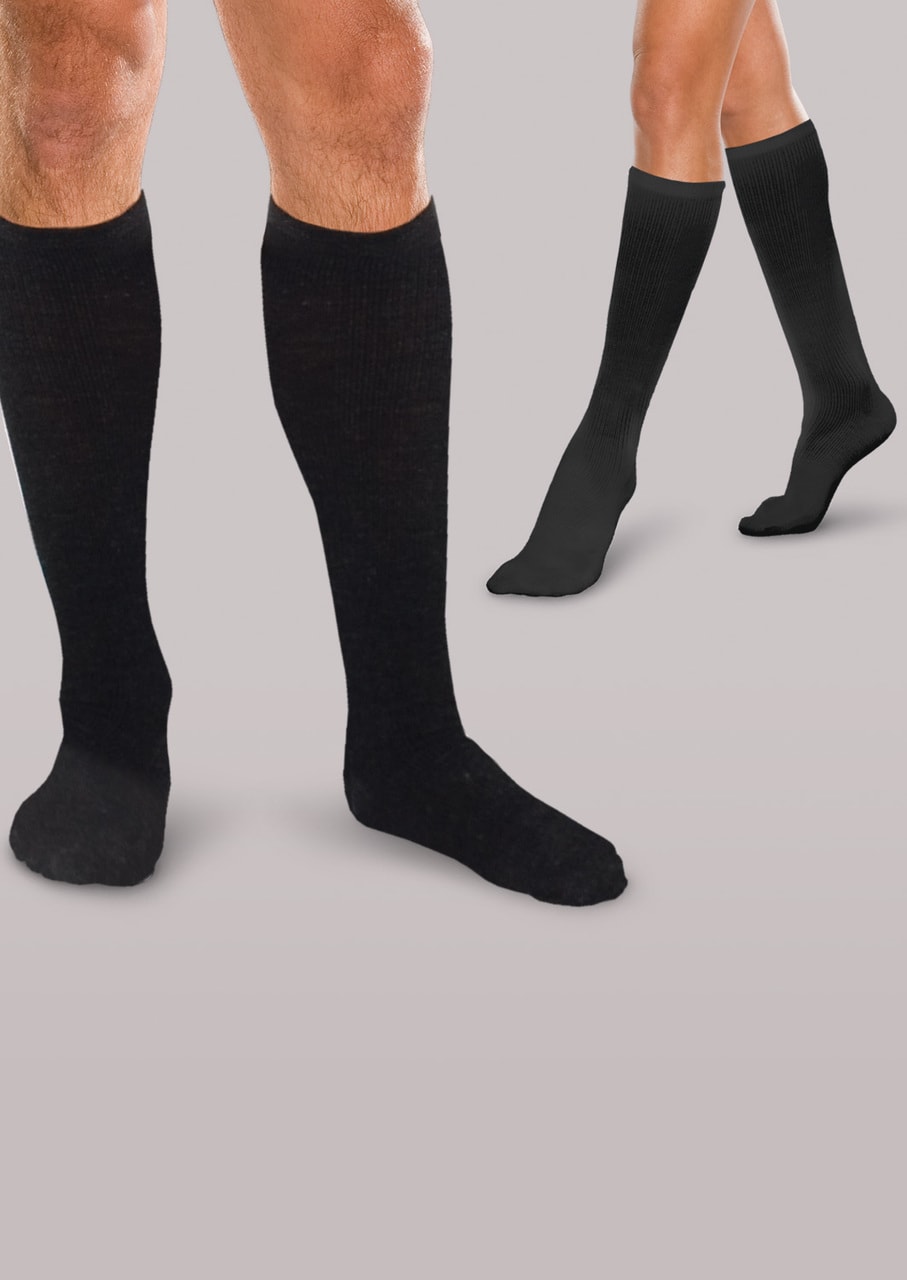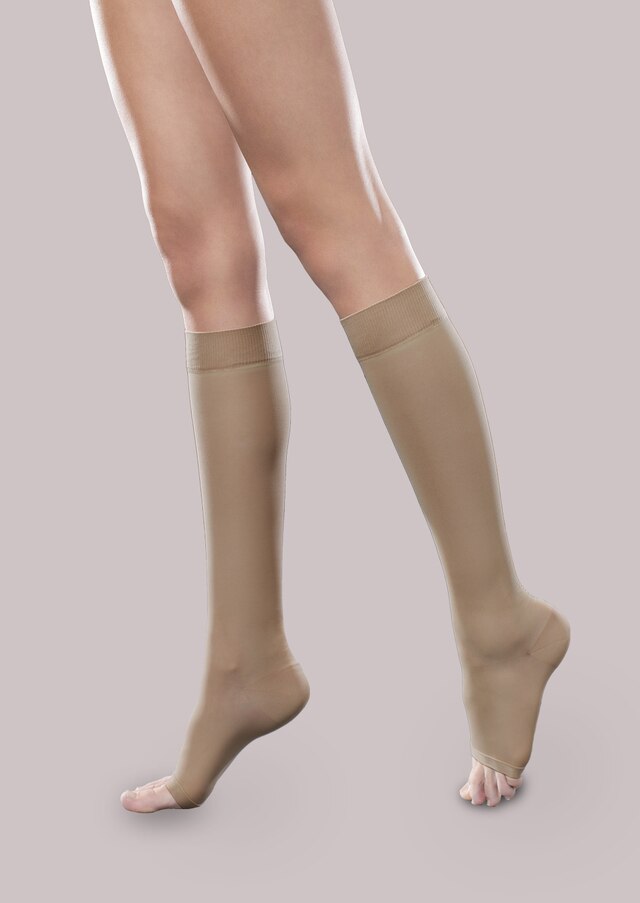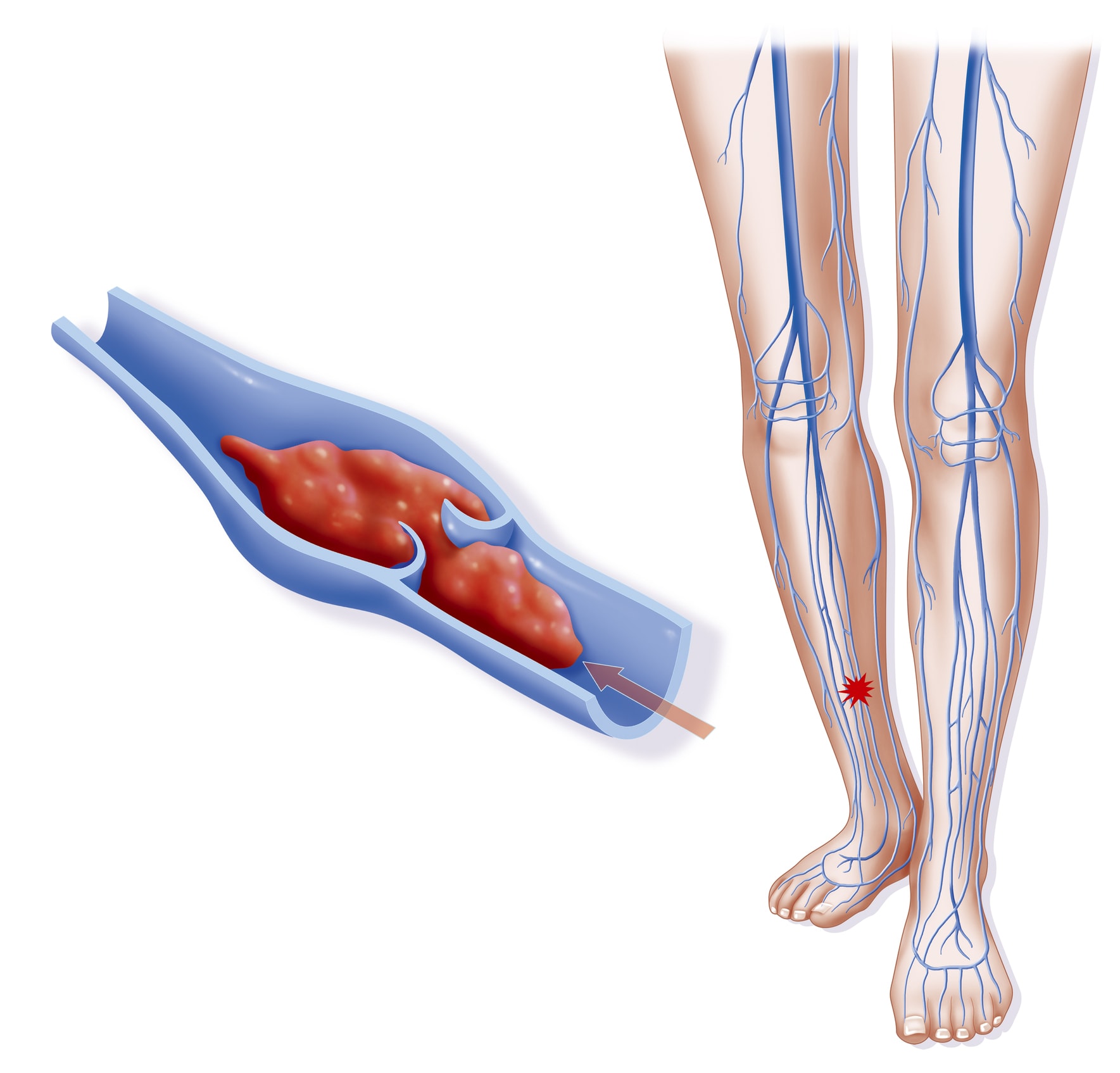The Power of Compression

When your doctor or health care provider mentions compression stockings, you may imagine an unattractive sheath of plastic fabric squeezing your legs. It is true that compression stockings are a medical product, especially the higher strength 20-30 mmHg and 30-40 mmHg. But that doesn’t mean they must be unsightly to wear.
Fortunately, the medical supply industry has recognized the many different benefits of wearing compression, and has responded with an equal variety of products for you to try. Compression can be a powerful aid in your recovery or your daily health. So who should wear compression? And what type should you consider?
Compression is Not Just for Seniors
Many seniors wear compression to control fluid build up in the legs. As we age, our bodies become less efficient at moving the fluid from our legs. In the course of the day, fluid can settle in the tissue of your legs. Your muscles may not be able to move it out of your limbs. So it sits there and becomes very painful.
Then there is the vein issue. The circulatory system is a roadmap of veins and arteries covering our bodies. We can’t see this, but there are tiny valves that move the blood through the veins. If the valves stop closing or become leaky, then we get varicose veins. Like fluid build up in the tissues, the blood will backflow in our veins. This can cause aches and pain in your limbs. Many find this very uncomfortable and seek the power of compression to ease the pain.
Frequent travelers might be worried about Deep Vein Thrombosis (DVT). This is a very dangerous situation where a blood clot in your legs- or sometimes arms – becomes mobile and finds its way to your lungs. If not treated quickly, it can be very dangerous. This video from Health.com provides a brief explanation of DVT. Compression gear – socks or stockings – can help prevent the clotting. An added benefit of compression for travelers is the energizing effect compression socks have on tired legs. Even Jessica Alba wears compression on the airplane.
Athletes wear compression post-workout for recovery. When you have exercised, your muscles build up lactic acid and other fluids – even blood – and recovery is much quicker when compression is used. Why? Because the gradient (more at the ankle and less at the calf) compression will help to move the fluids from the tissue and improve circulation.
Choosing Compression
Your doctor may prescribe compression for you. The surgical or medical grade compression strength is 20 to 30 mmHg and higher (30 to 40 mmHg). The amount of compression is measured in mmHg (millimeters Mercury); this represents the amount of pressure being applied to your limb.
The prescription will be used by Charron Medical to help select the right compression product for you. We have many variations of compression socks depending on the strength, length, and color. If you would like to try compression, feel free to come into the store and see the styles we have. People really seem to like being able to look at the compression products before buying. You might find a different brand or style you like online, but shopping local means you can see the product before you buy. Our employees are more than happy to help find the product that’s right for you. Charron Medical has been fitting patients and customers with compression socks and compression stockings for 45-years.
The brands we carry:
- Therafirm Ease
- Therasport
- Core-spun by KnitRite
- Activa Anti-Embolism
- Jobst
- Juzo
- Sigvaris (custom order)

The Cost of Compression
Good quality compression will set you back at least $30 per pair. Compression socks and stockings are more expensive than other hosiery you are used to buying. A 6-pack of NIke socks will run you $16.99 at Footlocker. Whereas, a single-pair of compression socks at Charron Medical starts at $30.95. The thigh-high, chap style, and pantyhose styles start at $70. There is a reason for this.
Compression socks and compression stockings are carefully designed with modern engineering to create the right amount of compression to the place location on your body. Meaning, these are not your typical tube sock. Compression gear is often gradient by design; it will be tighter at the ankle and gradually less pressure as you move up the leg. This is how it moves the blood and fluid back up. Compression is a medical product so you want to be sure you are getting good quality.
The materials are very specific too. A regular sock is often produced using a cotton-polyester blend. The compression sock does not contain any cotton or linen. These types of yarn are not strong enough to provide the necessary compression, and natural fibers can lose their shape quickly. The compression sock and stocking is woven from polyester, nylon, and spandex. These synthetic fibers might cost more than common cotton socks, but they are very durable.
Compression garments last a long time if you care for them properly. Most people have 2 to 4 pairs of compression socks. They alternate them to:
- Wash gently and air dry
- Washing your socks helps them return to their natural shape
A Word About Insurance
We have just finished explaining how compression is a medical product. And guess what? Your insurance company may or may not cover it. Some commercial plans like Anthem or Harvard Pilgrim usually cover compression. They might have restrictions, so call your carrier to get the details.
Sadly, Medicare does not cover compression stockings. This is particularly disappointing because of the many ways seniors benefit from compression.
Even if your insurance doesn’t cover compression, don’t be deterred – make the purchase anyway. You will be glad you did. Your legs will thank you.





